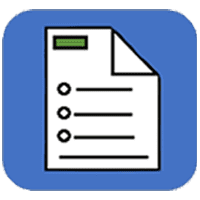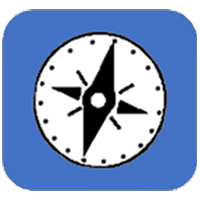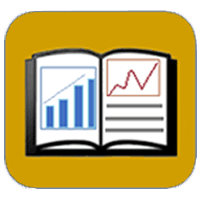Fuels & Fuel Treatments
Webinar recording.
Members of the LANDFIRE Team will bring you a timely, relevant and succinct webinar describing three different applications of LANDFIRE data in published scientific literature from 2021. Our talk will start with a “30K foot view” of how LANDFIRE data is (generally) used by students, academics and agencies. We will then spotlight three example scientific papers each with a unique focus on drought, fire and climate change. We will highlight general findings, and touch on the LANDFIRE datasets, applications used for each journal article.
Papers we will discuss:
1. Drought Sensitivity and Trends of Riparian Vegetation Vigor in Nevada, USA (1985–2018) | Albano, Christina, McGwire, K.C., Hausner, M.B., McEvoy, D.J., Morton, C.G., Huntington, J.L. (LANDFIRE Existing Vegetation Type classification used)
2. The Importance of Small Fires for Wildfire Hazard in Urbanized Landscapes of the Northeastern US | Carlson, Amanda R., Sebasky, M.E., Peters, M.P, Radeloff, V.C (LANDFIRE Fuels products used)
3. Modelling Species Distributions and Environmental Suitability Highlights Risk of Plant Invasions in Western US | McMahon, Devin, E., Urza, A.K., Brown, J.L., Phelan, C., Chambers, J.C. (LANDFIRE Reference Database used)
There will be 15 minutes at the end of this discussion for Q/A. Bring your questions – we’ll see you there.
View brief.
Extensive research shows us that native conifer trees, primarily juniper and pinyon pine, but also other conifers, have been increasing their footprint on the landscape at an unprecedented rate over the last 150 years or so, especially in places like the Great Basin. This is part of a global phenomenon of trees encroaching into and replacing adjacent grasslands and shrublands.
Some of that change is expansion in the traditional sense, that is, trees moving from higher elevations or fuel-limited sites protected from fire where they historically existed into areas where they never grew before. But much of the change is what we call ‘infill,’ which is what happens after trees colonize and continue to populate previously tree-less landscapes, turning them from sagebrush or grasslands with just a few trees per acre into closed-canopy woodlands – what you might think of as a forest.
View story map.
The Pack Creek Wildfire, ignited by an abandoned campfire, started early in the fire season on June 9, 2021 in the Pack Creek Day Use Area on the Manti-La Sal National Forest.
Under the influence of down-slope, down-canyon winds, the fire made a push west and down Pack Creek. The fire quickly exploded as a crown fire through a riparian area composed largely of cottonwood trees and pinyon and juniper landscapes. Within the community, fuel breaks implemented by Forestry, Fire and State Lands (State of Utah, FFSL) were designed to act as intermittent catch points for firefighters to actively engage the fire.
View workshop recording.
Read workshop summary.
Workshop purpose: Identify fire science and management needs and discuss tools and approaches to natural resource assessments and adaptation strategies for fire dynamics in future climates in Southwest (DOI Regions 8 & 10 [CA, NV, AZ]) bioregions.
Take-Aways:
Provide awareness of tools needed for decision-making in an uncertain future
Generate a list of new science actions to meet fire needs for practitioners/planners in future, non-analog landscapes and communities
Suggest how we might address and accomplish these identified needs going forward
Exchange Information
Make connections
This four-hour, virtual Summit was an abbreviated, rescheduled version of ‘Building Bridges and Solutions: Partners in Facing Fire-Science Challenges’ that was cancelled in April due to COVID-19. We assembled scientists and fire practitioners/leaders in an interagency effort to identify fire science and management needs and to discuss decision-making tools and approaches that address resource assessments and adaptation strategies for fire dynamics in future climates in the Southwest (Department of Interior [DOI] Regions 8 and 10 [CA, NV, AZ]). This overriding goal threaded together the Summit’s talks, Q&A, and break-out sessions. Speakers from various agencies, institutes, and academia focused on fire management and planning in future non-analog landscapes and climate-fire-ecosystem impact relationships in western forest (e.g., mixed-conifer, subalpine), desert (hot and cold, grassland, pinyon-juniper, sage-steppe), and Mediterranean/chaparral bioregions. Syntheses from talks, Mentimeter-conducted discussions, and break-out groups on management and actionable-science needs will be summarized in a white paper and posted on the Southwest, Great Basin, and California Fire Science Exchange websites. Let’s work together to address fire science and management in an uncertain future!
View article.
This study found that prescribed fires and operations reduced tree basal area loss from the wildfire by an average of 32% and 22% respectively, and that severity was reduced by 72% in areas with both prescribed fire and operations. Our approach could be applied to other wildfires and regions to better understand the effects of fuel treatments and fire suppression operations on wildfire severity.
View brief.
Large wildfires need four key ingredients to burn, not just one. Ignitions, fuels, and drought thresholds must be crossed at the same time, enhanced by anomalous weather events such as foehn winds. But how do these ingredients, or drivers, fit together in various ecosystems? In this important concept paper, Pausas and Keeley (2021) outline the mechanistic flow of these complex drivers for fire prone ecosystems and illustrate this in the figure below (Fig.1). In brief, the fire weather for a given ecosystem helps to push the other three essential driver thresholds, or saturation points, down. With ignitions, fuel continuity, and drought saturation points simultaneously lowered by the right weather, wildfire will be triggered.
Access the MRLC Rangeland Viewer.
View synthesis.
This synthesis reviews current knowledge of pinyon and juniper ecosystems, in both persistent and newly expanded woodlands, for managers, researchers, and the interested public. We draw from a large volume of research papers to centralize information on these semiarid woodlands. The first section includes a general description of both the Great Basin and northern Colorado Plateau. The ecology section covers woodland and species life histories, biology, and ecology and includes a detailed discussion of climate and the potential consequences of climate change specific to the Great Basin and Colorado Plateau. The history section discusses 20,000 years of woodland dynamics and geographic differences among woodland disturbance regimes and resilience. The ecohydrology section discusses hydrologic processes in woodlands that influence soil conservation and loss; water capture, storage, and release; and the effect that woodland structure and composition have on these processes. The final section, restoration and management, covers the history of woodland management, the different methods used, the advantages and disadvantages of different vegetation treatments, and posttreatment vegetation responses. We also discuss successes and failures and key components that determine project outcomes important for consideration when restoring ecosystem function, integrity, and resilience.
Webinar recording.
A year ago, the Landscape Fire and Resource Planning Management Tools (LANDFIRE) Program released its 2016 Remap for the conterminous United States (CONUS). The update was the most significant in LANDFIRE’s 16-year history, a ground-up rebuild of the base map to reflect 2016 land surface conditions that included a host of improvements to its 20-plus GIS mapping layers.
Because three key thresholds must be crossed all at once for a wildfire to start, avoiding just one of these thresholds─ ignitions, drought, or continuous fuels (Fig.1)─ could significantly reduce the likelihood of wildfire. As climate change makes fire weather more common everywhere, managing ignitions where wind is problematic and managing fuels where drought is problematic will help to keep stochastic, out-of-regime fires contained. Where fire management tools won’t help, a fire danger zone should be designated to reduce human activity and development, much like volcano or flooding zone designations.







